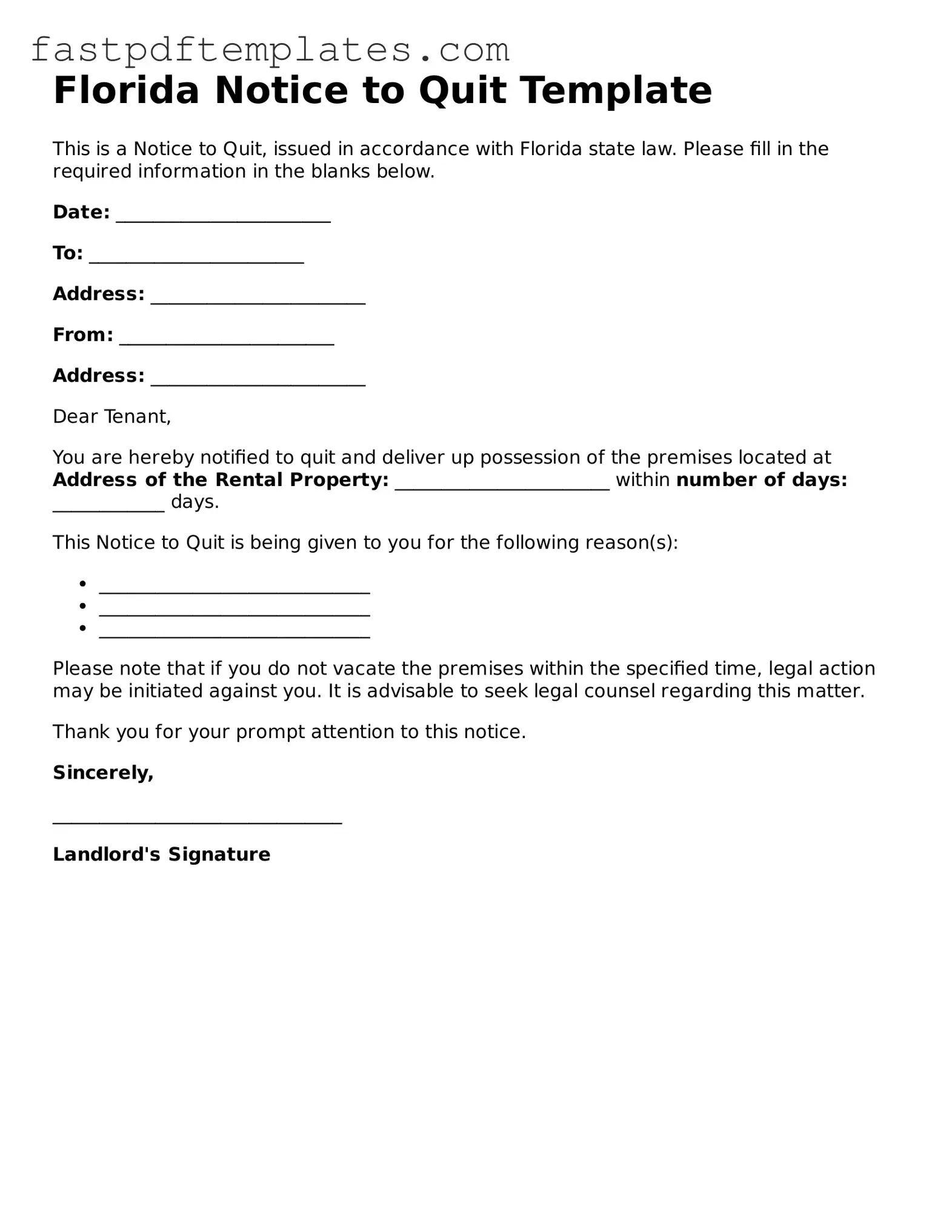Florida Notice to Quit Template
This is a Notice to Quit, issued in accordance with Florida state law. Please fill in the required information in the blanks below.
Date: _______________________
To: _______________________
Address: _______________________
From: _______________________
Address: _______________________
Dear Tenant,
You are hereby notified to quit and deliver up possession of the premises located at Address of the Rental Property: _______________________ within number of days: ____________ days.
This Notice to Quit is being given to you for the following reason(s):
- _____________________________
- _____________________________
- _____________________________
Please note that if you do not vacate the premises within the specified time, legal action may be initiated against you. It is advisable to seek legal counsel regarding this matter.
Thank you for your prompt attention to this notice.
Sincerely,
_______________________________
Landlord's Signature
